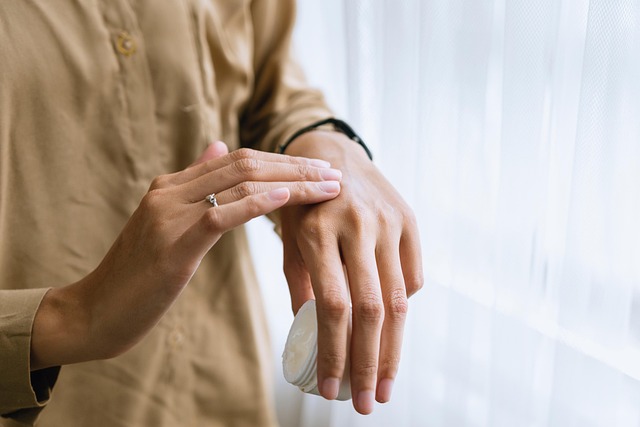Designing a sustainable training and skincare plan for aging skin
Practical strategies that combine targeted skincare with sustainable movement and nutrition help support aging skin and overall vitality. This article outlines balanced approaches to grooming, exercise, mobility, and recovery so you can build a long-term routine that fits daily life.

Aging skin and changing physical needs call for a coordinated plan that respects both physiology and lifestyle. A sustainable approach pairs consistent skincare with exercise, mobility work, and sensible nutrition so that skin health, strength, and function improve together. Rather than quick fixes, aim for small, measurable habits: sun protection and gentle daily grooming, progressive training that prioritizes mobility and strength, hydration and sleep strategies, and a flexible routine that can be adapted over months and years. When these elements are aligned, improvements in tone, resilience, and wellness tend to be more durable and easier to maintain.
This article is for informational purposes only and should not be considered medical advice. Please consult a qualified healthcare professional for personalized guidance and treatment.
Skincare and grooming for mature skin
Skincare for aging skin should focus on protection, barrier support, and targeted treatments. Use a daily broad-spectrum sunscreen, a gentle cleanser that doesn’t strip natural oils, and a moisturizer that supports the skin barrier. Incorporate actives gradually—retinoids or peptides at night and antioxidant serums in the morning can help reduce fine lines and support collagen production when tolerated. Grooming routines that avoid harsh shaving or abrasive exfoliation and prioritize hydration and barrier repair reduce irritation and redness. Consistency matters: daily small steps often outperform sporadic intensive treatments.
Exercise: movement, training, and mobility
Regular movement encourages circulation, lymphatic flow, and muscular support for posture—factors that influence skin appearance and overall function. Design training sessions that combine low-impact aerobic activity with mobility work: brisk walking, cycling, or swimming for cardio and daily mobility sequences for joints. Movement should be progressive and varied to prevent overuse and to keep the nervous system engaged. Short mobility sessions before or after workouts help maintain range of motion and reduce stiffness without adding significant time demands to the routine.
Strength, cardio, and flexibility
Building strength supports posture and facial structure by preserving muscle mass and connective tissue integrity. Include resistance training two to three times weekly, focusing on compound movements adapted to ability level. Cardio supports cardiovascular health and skin perfusion—aim for moderate-intensity sessions that raise heart rate without causing chronic fatigue. Flexibility work, like gentle stretching or yoga, helps maintain tissue length and supports recovery. Balance intensity and rest: adequate recovery prevents catabolic stress that can undermine skin repair and overall wellness.
Nutrition, hydration, and sleep
Nutrition fuels repair processes in skin and muscle. Prioritize a protein-rich, nutrient-dense diet with plenty of vegetables, healthy fats, and whole grains to supply amino acids, essential fatty acids, vitamins, and antioxidants. Hydration supports skin turgor and cellular function—regular water intake tailored to activity level and climate helps, as do hydrating foods like fruits and vegetables. Sleep is a critical repair window: aim for consistent, sufficient sleep to support hormonal balance and tissue regeneration. Small dietary changes and consistent sleep schedules compound into measurable benefits over months.
Building a consistent routine and wellness habits
A sustainable routine is simple, time-scaled, and adaptable. Structure weekly plans with a mix of strength days, cardio or movement days, and dedicated mobility or flexibility sessions. Integrate skincare into morning and evening rituals to make adherence automatic—cleanse, protect, hydrate in the morning; cleanse, treat, moisturize at night. Use habits stacking (pairing a new habit with an existing one) to increase follow-through. Track progress with realistic markers: strength increases, mobility range, sleep quality, and visual skin improvements rather than chasing immediate dramatic change.
Practical tips for grooming, mobility, and recovery
Practical adjustments make routines stick: swap heavy exfoliation for enzymatic or gentle chemical exfoliation once weekly; rotate footwear and cross-train to reduce joint stress; schedule mobility breaks during prolonged sitting to maintain circulation; and prioritize a warm-down and hydration after workouts to support recovery. Consider professional input—a dermatologist for persistent skin concerns and a certified trainer or physiotherapist for tailored mobility or strength plans. Small, consistent recovery practices such as foam rolling, sleep hygiene, and nutrient timing support both performance and skin health.
In designing a combined training and skincare plan for aging skin, balance and consistency are the most reliable tools. Protect the skin daily, prioritize strength and mobility in movement choices, support recovery through nutrition and sleep, and build a routine that fits daily life. Over time, these steady actions contribute to improved resilience, function, and the visible qualities of skin without demanding extreme measures.





